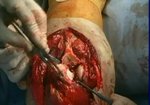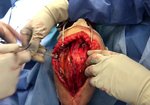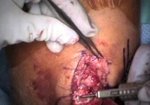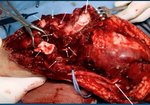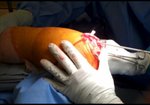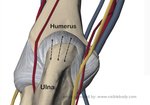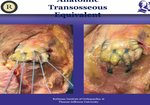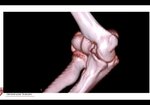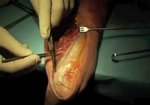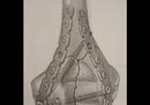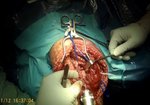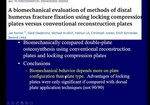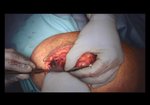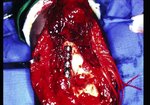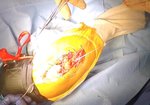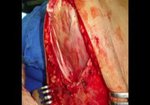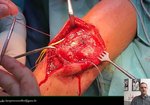
Video Player is loading.
Current Time 0:00
/
Duration 0:00
Loaded: 0%
0:00
Stream Type LIVE
1x
- 0.5x
- 0.75x
- 1x, selected
- 1.25x
- 1.5x
- 1.75x
- 2x
- Chapters
- descriptions off, selected
- captions settings, opens captions settings dialog
- captions off, selected
This is a modal window.
Beginning of dialog window. Escape will cancel and close the window.
End of dialog window.
10 seconds
Playback speed
This is a modal window. This modal can be closed by pressing the Escape key or activating the close button.
Surgical Treatment of Chronic Elbow Dislocation allowing Early Range of Motion: Triceps Sparing Medial and Lateral Approaches and the Naked Distal Humerus
4,802 views
February 8, 2013
Surgical Treatment of Chronic Elbow Dislocation allowing Early Range of Motion:
Operative Technique and Early ...
read more ↘ Clinical Results
Duane Anderson MD (1), Abebe Chala, PT (1), Neil White MD (2),
Shawn O’Driscoll MD (3), Lucas Anderson MD (4)
(1) Soddo Christian Hospital Ethiopia
(2) Calgary University Hospital, Canada
(3) Mayo Clinic USA
(4) University of Utah, USA
The surgical treatment of chronic elbow dislocation is a difficult and challenging operation and historically the results have been less than optimal due to instability and repair of the triceps tendon. We have developed a technique utilizing triceps sparing medial and lateral approaches to debride and reduce the elbow joint that allows early motion with little risk of dislocation. We present the operative technique and early results.
Patients and Methods: This study was a retrospective review of clinical and radiographic records of consecutive patients who had undergone triceps sparing medial and lateral approaches allowing surgical treatment of a chronic elbow dislocation sans fracture. Patients were excluded who had fractures that required operative treatment. 7 of 12 patients had adequate clinical and radiographic followup. This included 4 males and 3 females with a mean age of 24 years (range 7-45). Time from injury to surgical reduction averaged 10 months (range 1-34). Followup was a mean of 6 months (ranged 1-15 months). The Mayo elbow score was used to evaluate clinical results as well as range of motion.
Operative technique involved developing anterior and posterior soft-tissue sleeves from both medial and lateral surgical approaches, sparing the triceps. This left the distal humerus bare. The olecranon fossa was cleared of soft tissue and scar. The elbow was then reduced after transposition of the ulnar nerve anteriorly. The soft tissue envelope was repaired both medially and laterally. A sling was used for 1-2 weeks after surgery without splinting. Formal physical therapy was initiated during the second week of recovery.
Results: Preoperative average arc of motion averaged 13 degrees (0-30) and increased to an average arc of 93 degrees postoperatively (55-125). Mayo score postoperatively was 80 or higher in all patients (average 89). Complications included one transient ulnar nerve injury and one spontaneous elbow fusion.
Conclusions: Our initial results with this technique are encouraging. The majority of patients had improved elbow function including increased range of motion and reduced pain. Open reduction of chronic elbow dislocation can be accomplished while permitting early motion and with little risk of dislocation. Long-term follow-up will be required to determine if these early clinical pain and functional results last.
↖ read less
Operative Technique and Early ...
read more ↘ Clinical Results
Duane Anderson MD (1), Abebe Chala, PT (1), Neil White MD (2),
Shawn O’Driscoll MD (3), Lucas Anderson MD (4)
(1) Soddo Christian Hospital Ethiopia
(2) Calgary University Hospital, Canada
(3) Mayo Clinic USA
(4) University of Utah, USA
The surgical treatment of chronic elbow dislocation is a difficult and challenging operation and historically the results have been less than optimal due to instability and repair of the triceps tendon. We have developed a technique utilizing triceps sparing medial and lateral approaches to debride and reduce the elbow joint that allows early motion with little risk of dislocation. We present the operative technique and early results.
Patients and Methods: This study was a retrospective review of clinical and radiographic records of consecutive patients who had undergone triceps sparing medial and lateral approaches allowing surgical treatment of a chronic elbow dislocation sans fracture. Patients were excluded who had fractures that required operative treatment. 7 of 12 patients had adequate clinical and radiographic followup. This included 4 males and 3 females with a mean age of 24 years (range 7-45). Time from injury to surgical reduction averaged 10 months (range 1-34). Followup was a mean of 6 months (ranged 1-15 months). The Mayo elbow score was used to evaluate clinical results as well as range of motion.
Operative technique involved developing anterior and posterior soft-tissue sleeves from both medial and lateral surgical approaches, sparing the triceps. This left the distal humerus bare. The olecranon fossa was cleared of soft tissue and scar. The elbow was then reduced after transposition of the ulnar nerve anteriorly. The soft tissue envelope was repaired both medially and laterally. A sling was used for 1-2 weeks after surgery without splinting. Formal physical therapy was initiated during the second week of recovery.
Results: Preoperative average arc of motion averaged 13 degrees (0-30) and increased to an average arc of 93 degrees postoperatively (55-125). Mayo score postoperatively was 80 or higher in all patients (average 89). Complications included one transient ulnar nerve injury and one spontaneous elbow fusion.
Conclusions: Our initial results with this technique are encouraging. The majority of patients had improved elbow function including increased range of motion and reduced pain. Open reduction of chronic elbow dislocation can be accomplished while permitting early motion and with little risk of dislocation. Long-term follow-up will be required to determine if these early clinical pain and functional results last.
↖ read less
Comments 3
Login to view comments.
Click here to Login



